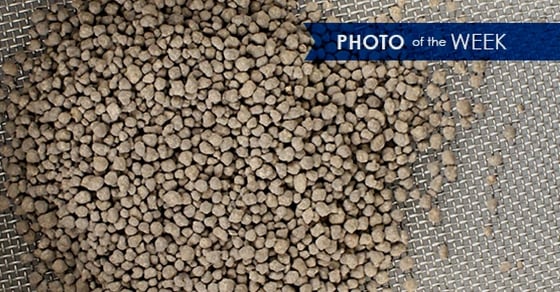This week’s photo highlights a gypsum sample.
Gypsum, both natural and synthetic, is commonly pelletized for use as a soil amendment. Pelletizing the material creates a strong product capable of withstanding transportation and handling, while still breaking down in standard field conditions.
Pelletizing is achieved via tumble growth agglomeration, most often in a pin mixer, disc pelletizer, and rotary dryer set-up. Gypsum fines and binder are first fed into the pin mixer as a pre-conditioning stage. Here, an intense spinning action reduces air and water volume between particles, creating densification in the material. Following the pin mixer, the material moves on to the disc pelletizer, where it is pelletized into a uniform, round pellet. Because moisture, in the addition of binder, is also added during the pelletization stage, drying is necessary as the final step. A rotary dryer is utilized after the disc pelletizer to dry and harden the pellets into their final form.
FEECO’s Process Experts have worked with gypsum for years, and are highly adept at developing the ideal process for each unique sample they encounter. For more information, download our gypsum processing handbook, or contact a FEECO expert today!


